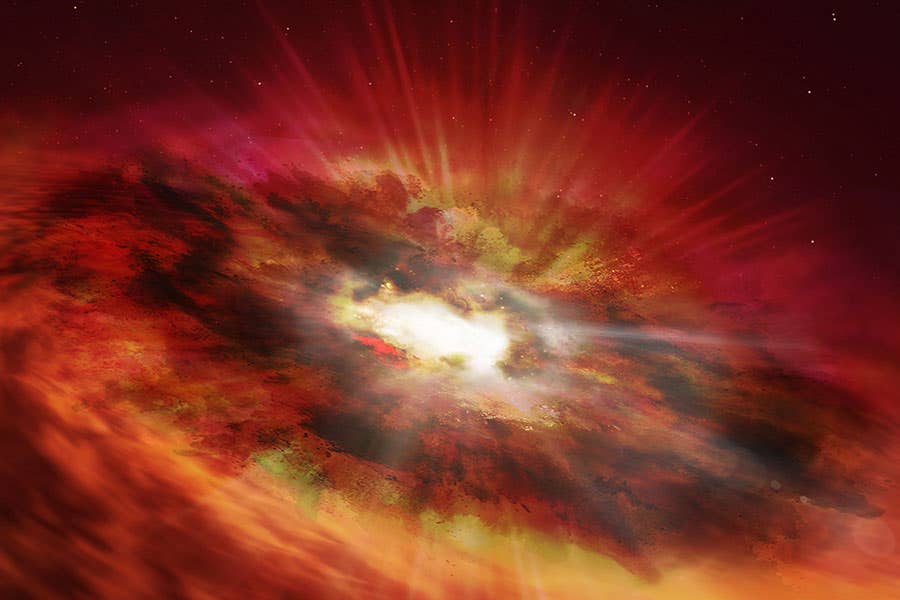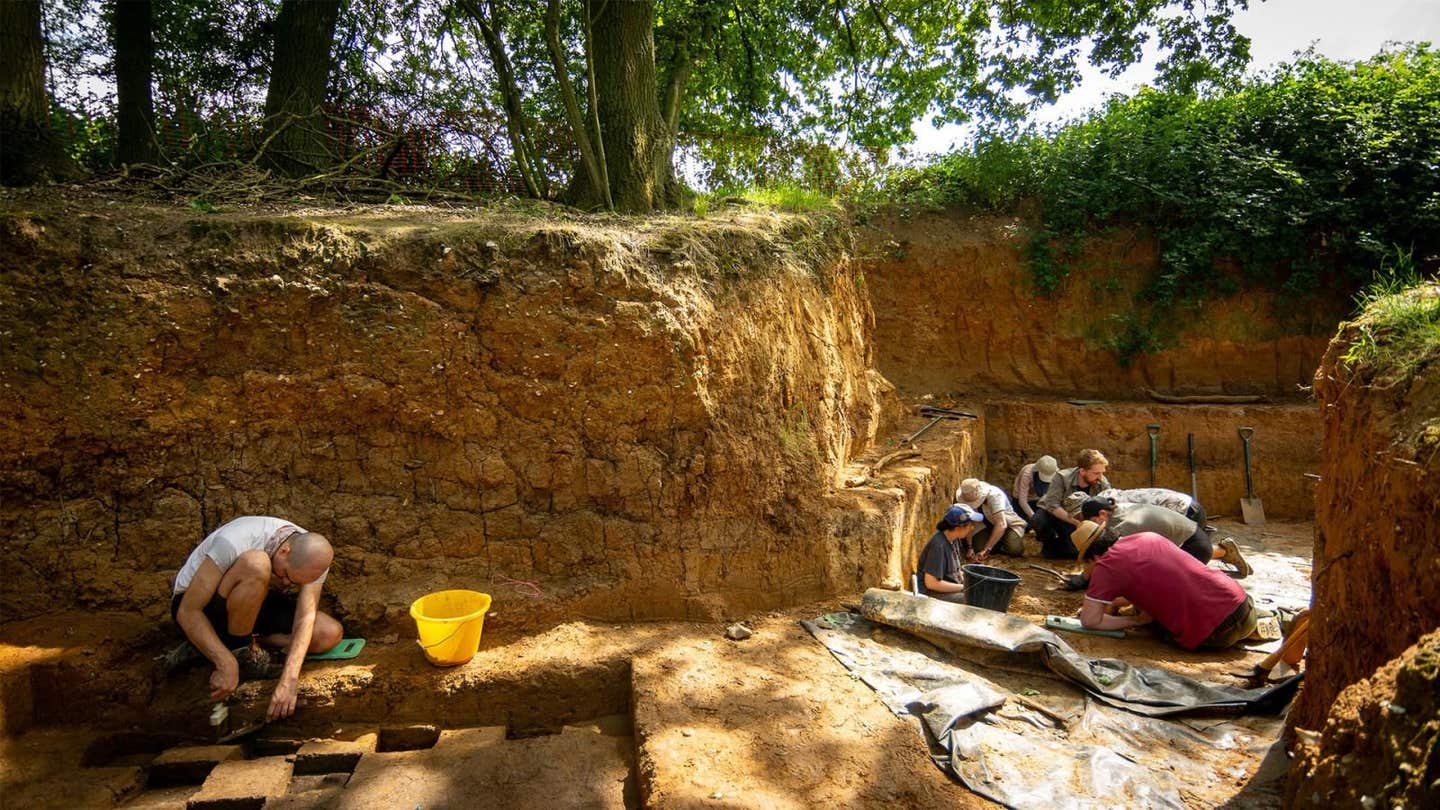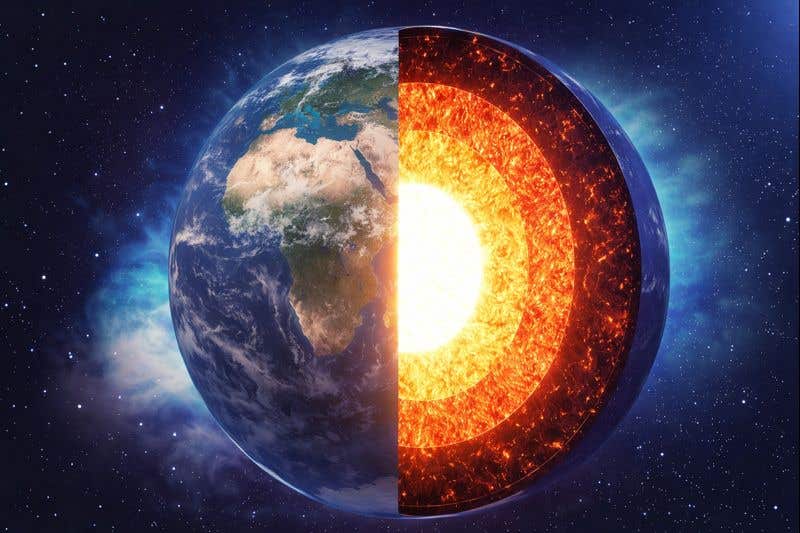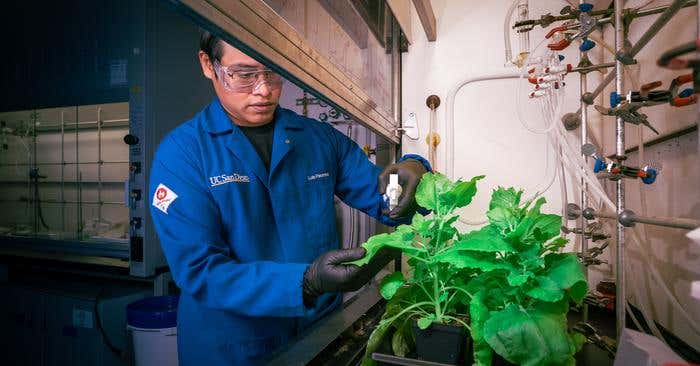Missing-link black hole found lurking in plain sight
Research team has discovered a supermassive black hole in the early Universe that could provide the missing link in the evolution of quasars

[Apr 19, 2022: Hitoshi Yamamoka, NAOJ, NINS]
Artistic impression of a young growing black hole emerging from the center of a dusty starburst galaxy. (CREDIT: ESA/Hubble N. Bartmann)
An international research team has discovered a supermassive black hole in the early Universe that could provide the missing link in the evolution of quasars, some of the brightest objects in space. This new object was discovered in the most unlikely place: already archived observations of one of the most intensively studied regions of the sky.
This result is important for understanding the evolution of supermassive black holes, like the one hiding at the center of our own Milky Way Galaxy. And the method of discovery suggests that there are more surprises waiting to be discovered in the archive data.
Quasars, extremely bright objects powered by matter falling into a supermassive black hole, formed early in the history of the Universe, only 700-800 million years after the Big Bang. It is believed that quasars evolved from supermassive black holes in dusty starburst galaxies, a class of galaxies that has also been confirmed to have appeared early on. But there has been no direct evidence linking the two.
Researchers found evidence for the missing link while analyzing archived Hubble Space Telescope data for a region of the sky known as the “Hubble GOODS North field” in the constellation Ursa Major.
Related Stories:
This field has been studied extensively by Hubble and other world-leading telescopes. The team noticed an object, nicknamed GNz7q, that appears to be a black hole just starting to overpower its host galaxy in the process of becoming a quasar.
Additional archive data including the Subaru Telescope, which can see farther into infrared wavelengths than Hubble, allowed astronomers to distinguish the black hole from its host galaxy.
Seiji Fujimoto, lead author of the paper describing the discovery, explains his vision for future research, “Subaru Telescope’s Hyper Suprime-Cam has also discovered a large number of quasars in the early universe, and further observations with the ALMA radio telescope and the James Webb [Space Telescope] have been scheduled. Detailed analysis at multiple wavelengths with a combination of these telescopes may find even more objects like GNz7q in the future.”
These results appeared as Fujimoto et al. “A dusty compact object bridging galaxies and quasars at cosmic dawn” in Nature.
For more science and technology stories check out our New Discoveries section at The Brighter Side of News.
Note: Materials provided above by NAOJ and NINS. Content may be edited for style and length.
Like these kind of feel good stories? Get the Brighter Side of News' newsletter.
Tags: #New_Discoveries, #NASA, #Space, #Black_Holes, #Science, #Stars, #Hubble, #Quasars, #Research, #The_Brighter_Side_of_News



